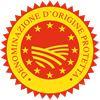Description
The Mel da Terra Quente PDO is honey made by the Apis mellifera Iberica species of bee which is commonly found in the Terra Quente area of north eastern Portugal. The nectar is gathered from the Mediterranean flora, typical of this mountainous region where heather, eucalyptus, lavender, broom and, especially, rosemary dominate the natural vegetation.
Production Area
Mel da Terra Quente PDO is made in the municipal areas of Mirandela, Vila flor, Moncorvo, Freixo de Espada à Cinta, Mogadouro, Alfândega da Fé, Macedo de Cavaleiros, Carrazeda de Anciães, Vila Nova de Foz Côa and Valpaços, in the Bragança district.
Production Method
Mel da Terra Quente PDO is mostly produced on uncultivated land sometimes enclosed with dry-stone walls. The hives must be no further than 1.000 m from eucalyptus woods. The honey must be extracted between July and September either by the pressing or traditional method. Extraction and filtering must be carried out within the production area at a maximum temperature of 45°C.
Appearance and Flavour
Mel da Terra Quente PDO honey has a light amber colour with a high level of crystallisation. It has a distinct taste of the rosemary which grows in abundance in this area.
History
The production of Mel da Terra Quente PDO results from the long tradition and high reputation that the honey produced in this north eastern part of Portugal has always enjoyed. The presence of old and long abandoned hives and the obvious beekeeping expertise to be found among the local inhabitants make it very apparent that beekeeping in this area goes back a long time into the past. Official references to this variety of honey are to be found in documents dating back to the first half of the 18th century.
Gastronomy
Mel da Terra Quente PDO should be stored in a cool, dark place. It crystallises very easily. It may be eaten as it is but is also used as an ingredient in many local cake and pastry recipes.
Marketing
This honey is sold as Mel da Terra Quente PDO in either a clear version or a set version. When more than 35% of the pollen comes from rosemary blossom it may be called Mel de Rosmarinho da Terra Quente PDO.
Distinctive Features
The high amount of rosemary pollen in Mel da Terra Quente PDO (which must, in all cases be a minimum of 15%) contributes to the particular and distinctive flavour of this honey.





